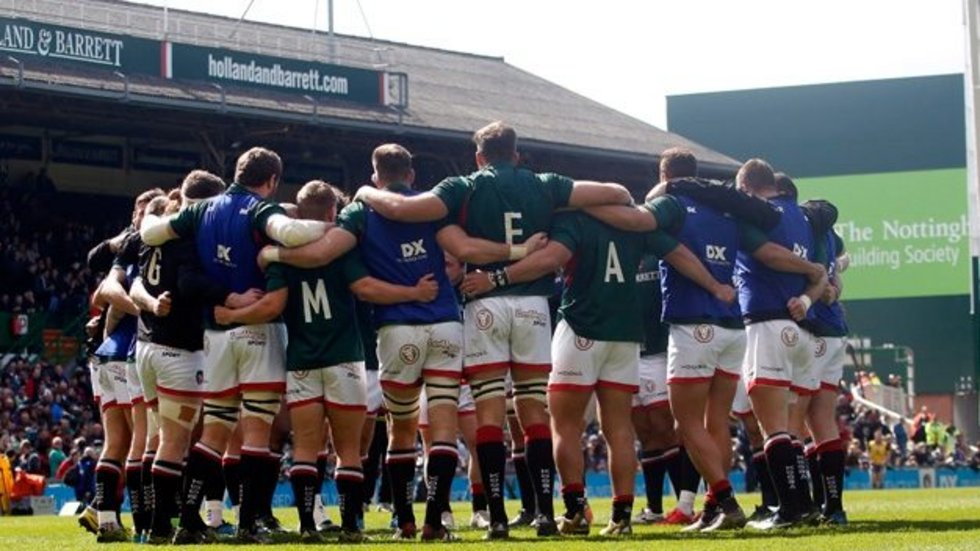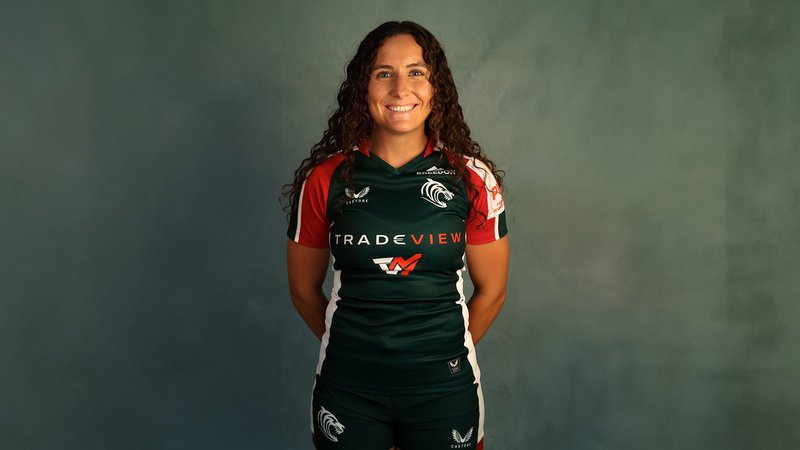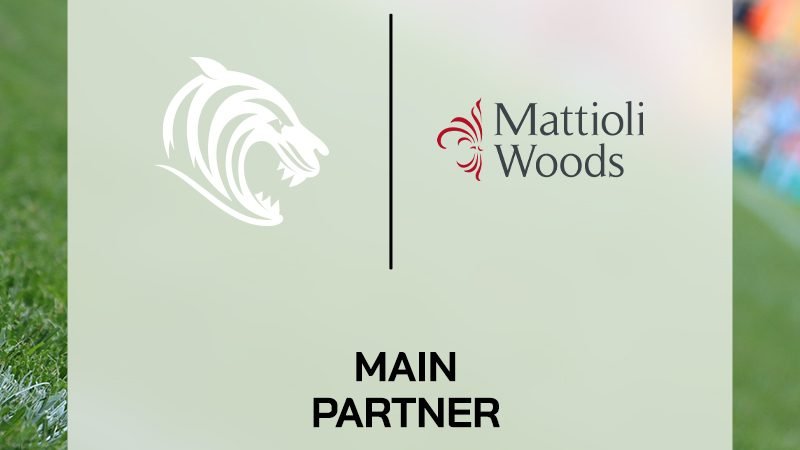Assembling a squad to compete at the top end of the professional game is a crucial job at a club with consistently high expectations. Leicester Tigers head of rugby operations Ged Glynn explains how the process works...
“Any squad is a jigsaw which needs to be put together,” says Glynn who joined Tigers in 2010 initially as chief scout and has coaching experience with England ‘A’, England Under-21s and London Irish as well as the Spanish national team, Rotherham, Loughborough University and Cambridge University.
“You have to look for a balance because within a squad you cannot pay everybody £400,000 a year because you wouldn’t have enough players, and you can’t pay everyone £10,000 a year because the squad would just not be good enough.
Glynn believes there are three ways of selecting those players and draws a comparison with assembling a wine cellar.
“The first way is that you grow your own,” he says. “For us, that means bringing players through from within your academy.
“You must remember, though, that your academy is from a pre-determined area and quality is dependent on a particular year or cohort. You might get a Ben Youngs from Norfolk or a Manu Tuilagi or Sam Harrison from Hinckley. But because we have to produce players for the top table, you may have a year or two when nobody really meets the standards you need.
“The other extreme is to go to the most expensive end of the marketplace. You know the ability of those players and you know how much they will cost. You also know they are likely to be in a certain age group.
“You get what you pay for if you are looking at experienced, international players, but you cannot have that profile in every position in the squad.”
The third category is an area where Glynn feels Tigers have an outstanding record.
“The other method is what the French would call ‘en primeur’ – in effect nurturing the potential within a good crop of young players.
“This is where you bring players in early from other areas in the belief that they can develop and improve with you. It’s an area we have used and where we have been very successful.
“Examples in the current squad would be Dom Barrow, Graham Kitchener, Ed Slater and Adam Thompstone. Or Ellis Genge, Mike Williams, Logo Mulipola. They are all players who came here at relatively early stages in their career and have developed with us. Or guys like Telusa Veainu who had played at a certain level but was then out of contract and waiting to see what he would do next.
“Owen Williams, Steve Mafi, Niall Morris, Niki Goneva, Geoff Parling, you would put them all in that category as Tigers signings.
“In previous years you could include players like Austin Healey, Ben Kay, Martin Corry, Richard Cockerill and Marcos Ayerza. They all became iconic figures in Leicester Tigers history but played their first rugby elsewhere, then came here as young players and became established internationals and major figures in the game.”
That ‘jigsaw’ is coming together ahead of the return to pre-season training in July when new faces will include forwards Sione Kalamafoni and Dominic Ryan, backs Joe Ford and Jonah Holmes, and England fly-half George Ford who returns to the club where he originally made his big breakthrough from the academy ranks.
Freddie Burns, Owen Williams and Fraser Balmain are among the established names who have moved on since the end of the season, while Peter Betham has confirmed a move to Clermont Auvergne as head coach Matt O’Connor prepares for the start of the new campaign.
“Matt O’Connor brings complete clarity of message,” said Glynn. “He knows exactly how he wants to play and the profile of the players he needs in the squad to play that game.
“Tigers spend up to the salary cap and, therefore, in order to effect those changes, Tigers have to release players to bring anyone in. That is complicated by the fact we are always working 12 to 18 months ahead in our planning. It might be necessary to release players now to ensure we have the best squad not only for next season but the 2018/19 season as well.
“The salary cap means that the finances are an important element of the jigsaw. A player can be part of that jigsaw initially on say £100,000 per year, but if that same player can get £400,000 elsewhere, and the value you place on them is £200,000 then to get the best possible squad it makes good sense to let them go.
“We’ve already done a lot of work on the squad with some good new signings. And if you talk about key signings this year then you have to include players like Ellis Genge, Dom Barrow, Graham Kitchener and Brendon O’Connor who all agreed new contracts because they want to play here although they would all attract a lot of attention in the marketplace.
“The EQP balance is worth a significant part of the central funding, you can’t ignore that, and sometimes you have to change the squad to meet your EQP targets.
“Matt will still want a few changes to that squad going forward and we will continue to work on that and assemble the best possible squad up to the level of the salary cap.”
“Any squad is a jigsaw which needs to be put together,” says Glynn who joined Tigers in 2010 initially as chief scout and has coaching experience with England ‘A’, England Under-21s and London Irish as well as the Spanish national team, Rotherham, Loughborough University and Cambridge University.
“You have to look for a balance because within a squad you cannot pay everybody £400,000 a year because you wouldn’t have enough players, and you can’t pay everyone £10,000 a year because the squad would just not be good enough.
Glynn believes there are three ways of selecting those players and draws a comparison with assembling a wine cellar.
“The first way is that you grow your own,” he says. “For us, that means bringing players through from within your academy.
“You must remember, though, that your academy is from a pre-determined area and quality is dependent on a particular year or cohort. You might get a Ben Youngs from Norfolk or a Manu Tuilagi or Sam Harrison from Hinckley. But because we have to produce players for the top table, you may have a year or two when nobody really meets the standards you need.
“The other extreme is to go to the most expensive end of the marketplace. You know the ability of those players and you know how much they will cost. You also know they are likely to be in a certain age group.
“You get what you pay for if you are looking at experienced, international players, but you cannot have that profile in every position in the squad.”
The third category is an area where Glynn feels Tigers have an outstanding record.
“The other method is what the French would call ‘en primeur’ – in effect nurturing the potential within a good crop of young players.
“This is where you bring players in early from other areas in the belief that they can develop and improve with you. It’s an area we have used and where we have been very successful.
“Examples in the current squad would be Dom Barrow, Graham Kitchener, Ed Slater and Adam Thompstone. Or Ellis Genge, Mike Williams, Logo Mulipola. They are all players who came here at relatively early stages in their career and have developed with us. Or guys like Telusa Veainu who had played at a certain level but was then out of contract and waiting to see what he would do next.
“Owen Williams, Steve Mafi, Niall Morris, Niki Goneva, Geoff Parling, you would put them all in that category as Tigers signings.
“In previous years you could include players like Austin Healey, Ben Kay, Martin Corry, Richard Cockerill and Marcos Ayerza. They all became iconic figures in Leicester Tigers history but played their first rugby elsewhere, then came here as young players and became established internationals and major figures in the game.”
That ‘jigsaw’ is coming together ahead of the return to pre-season training in July when new faces will include forwards Sione Kalamafoni and Dominic Ryan, backs Joe Ford and Jonah Holmes, and England fly-half George Ford who returns to the club where he originally made his big breakthrough from the academy ranks.
Freddie Burns, Owen Williams and Fraser Balmain are among the established names who have moved on since the end of the season, while Peter Betham has confirmed a move to Clermont Auvergne as head coach Matt O’Connor prepares for the start of the new campaign.
“Matt O’Connor brings complete clarity of message,” said Glynn. “He knows exactly how he wants to play and the profile of the players he needs in the squad to play that game.
“Tigers spend up to the salary cap and, therefore, in order to effect those changes, Tigers have to release players to bring anyone in. That is complicated by the fact we are always working 12 to 18 months ahead in our planning. It might be necessary to release players now to ensure we have the best squad not only for next season but the 2018/19 season as well.
“The salary cap means that the finances are an important element of the jigsaw. A player can be part of that jigsaw initially on say £100,000 per year, but if that same player can get £400,000 elsewhere, and the value you place on them is £200,000 then to get the best possible squad it makes good sense to let them go.
“We’ve already done a lot of work on the squad with some good new signings. And if you talk about key signings this year then you have to include players like Ellis Genge, Dom Barrow, Graham Kitchener and Brendon O’Connor who all agreed new contracts because they want to play here although they would all attract a lot of attention in the marketplace.
“The EQP balance is worth a significant part of the central funding, you can’t ignore that, and sometimes you have to change the squad to meet your EQP targets.
“Matt will still want a few changes to that squad going forward and we will continue to work on that and assemble the best possible squad up to the level of the salary cap.”




